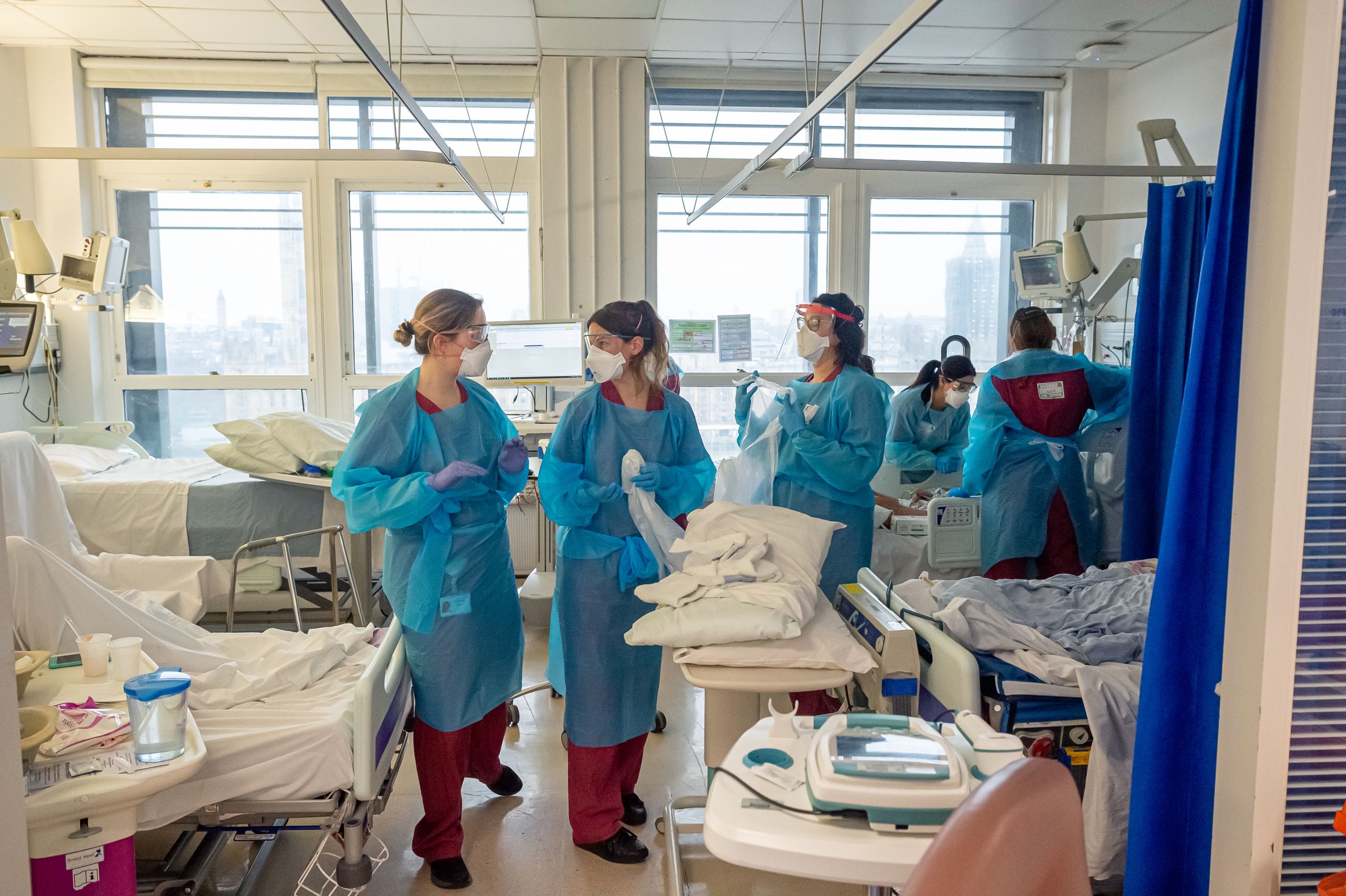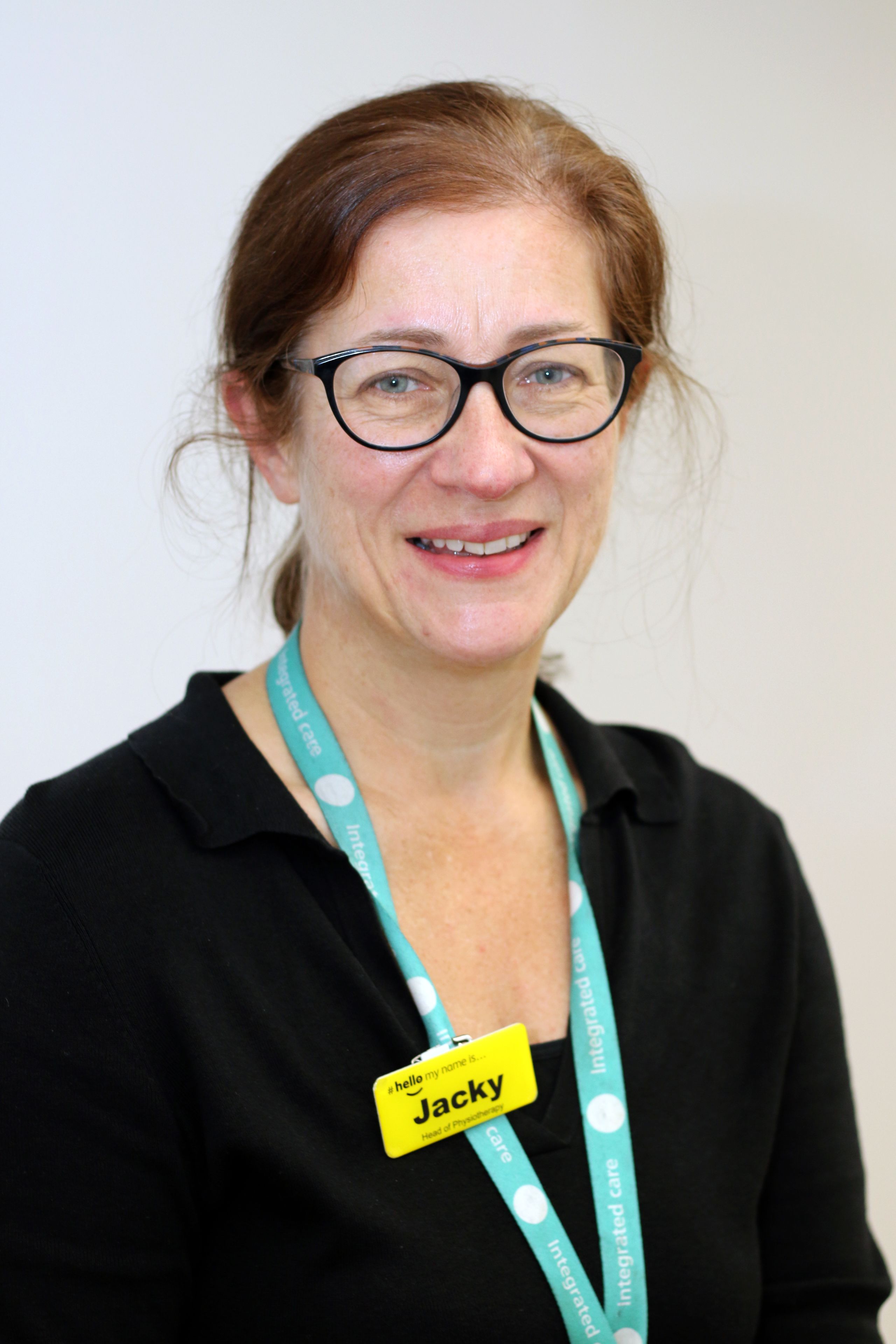Jacky's story


Jacky Jones
Head of Physiotherapy
“Doing physiotherapy in full PPE affected interaction with patients. We looked like nuclear workers with masks and visors. It was heart-breaking.”
“We see 30,000 new patients a year in outpatients and 90,000 follow ups. From 9 March we placed clinics on hold. We took no new bookings and began setting up telephone consultations for existing patients. But we didn’t have enough phones. And the batteries didn’t last a morning.
There is a lot you can do remotely – providing education, advice and guidance. But if you want to see how a shoulder moves you can’t do that on the phone. We had a web-based system for video consultations, though it had glitches. We managed to do half to two-thirds of our consultations virtually.
I didn’t get any complaints. Patients were worried and pleased not to have to come to the hospital. We sent texts explaining the changes. But we have a very ethnically diverse population. Some patients turned up at the hospital because they had not understood the texts. We have to think how we communicate better next time.
Closing down face to face outpatient consultations meant IT had to rapidly support us to provide them remotely. We have talked about doing it for years but the platform wasn’t there. Now it is. It has enabled us to be agile and flexible in what we offer. We have to challenge ourselves in future about who comes in and who can be treated remotely. There are advantages. If you can access your exercise programme remotely, it is easier to fit them into your lifestyle.
With the massive expansion of critical care, they needed more physiotherapists as we support patients being ventilated, helping to optimise their oxygenation and keeping their joints moving. One for every four beds is the model.
“The hardest time was around Easter when local guidance for the PPE to be used during physiotherapy interventions was changed.”
Critical care drove how we worked. Closing down face to face outpatients released staff for critical care. But we didn’t have enough people with the right skills. We had to assess what skills staff had, what training they needed. It was a huge logistical exercise. Like doing a jigsaw.
The biggest issue for the COVID-19 patients was fatigue and breathlessness. That’s difficult when you need to exercise. You can’t get out of bed or go to the toilet.
Doing active physiotherapy in full PPE was very challenging. And it affected interaction with patients. We looked like nuclear workers with masks and visors. It was heart-breaking. Personal contact is so important.
I’ve been working for 31 years and I have never seen anything like this. I told staff at the start they were looking to me for a lead but there was no experience to help me.
The biggest challenge was supporting the staff. I wanted to get it right for them. I tried to be visible but I felt guilty I couldn’t spend more time on the frontline. Lots had personal worries, and worries about their families.
There were confusions over the guidance – sometimes the Trust’s guidance was at odds with our professional body’s guidance. It was a worrying time.
The hardest time was around Easter when local guidance for the PPE to be used during physiotherapy interventions was changed. That was very difficult - it was a massive thing for the staff, taking something away that they felt was protective at the height of the crisis.
Coming out of the crisis is hard too. The Trust has been so good about supporting health and wellbeing. But people are tired and life is not back to normal.
We are still learning about COVID-19 and how long rehabilitation may take. A post-COVID-19 clinic was set up but it was initially not multidisciplinary. The consultants rightly wanted to follow up their patients but the review clinics were just medical. There was no examination of their nutritional, physical and other needs. Now we are playing catch-up.”
Read more stories

